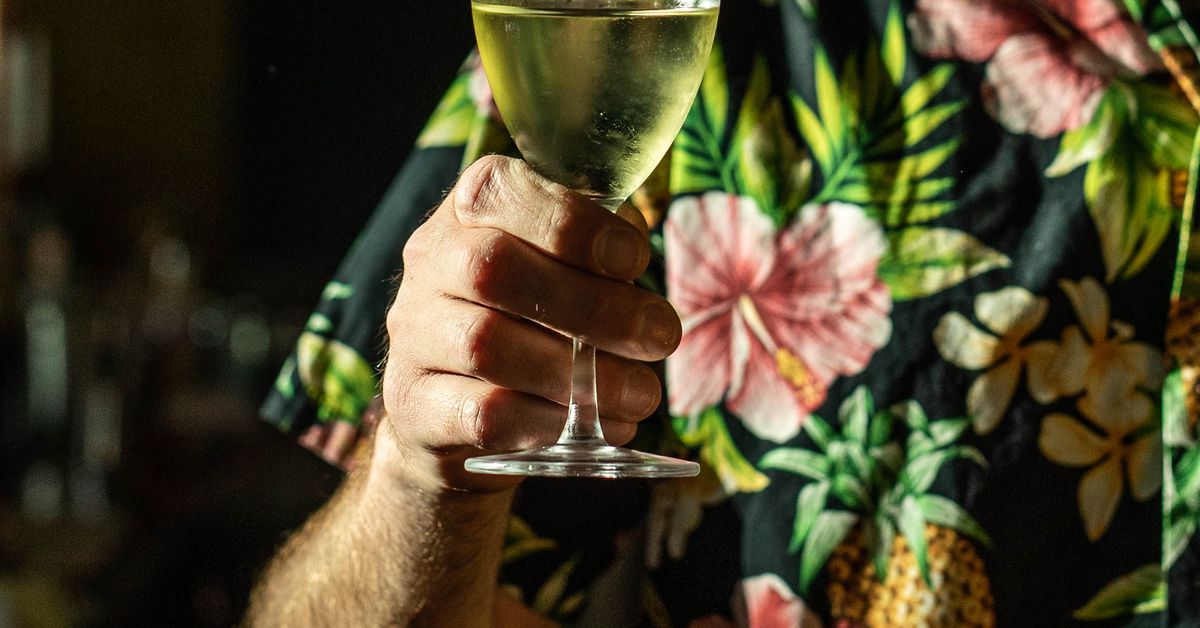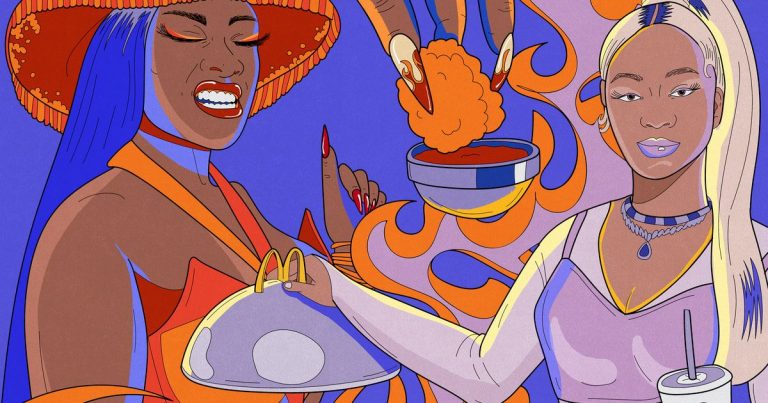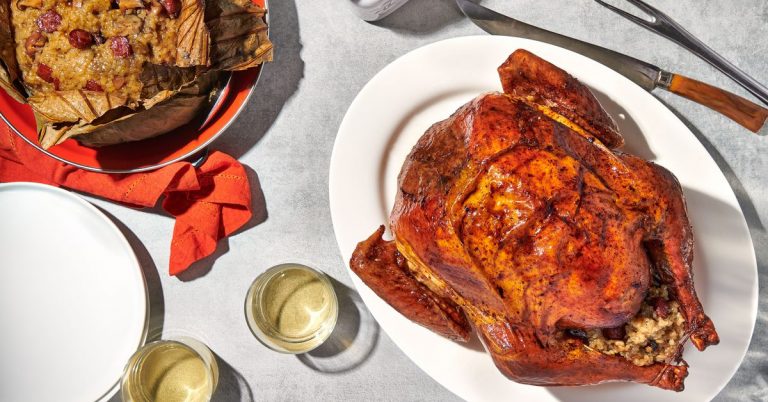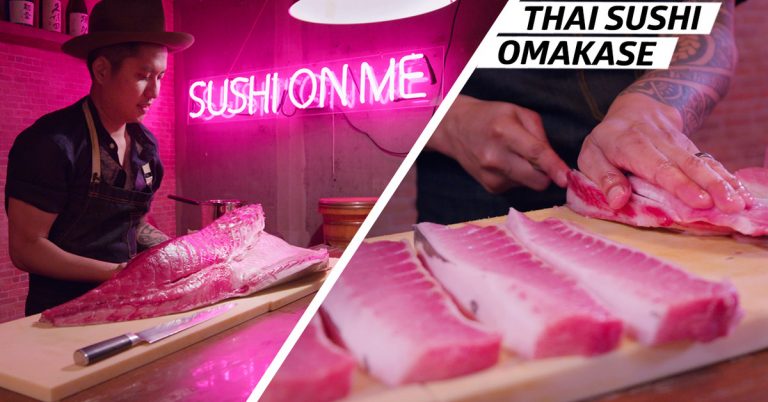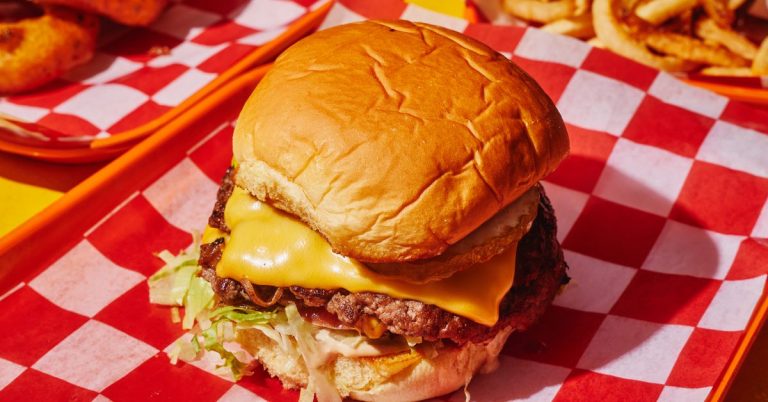How Low Bar in Oaklands Explores What it Means to be a Chicano Bar
When friends Matthew Meyer and Daniel Paez were planning Low Bar in Oakland, the idea was to keep doing what they loved to do — cooking food and mixing drinks that were approachable, with interesting twists that allowed them to express themselves. But once they opened the bar in spring 2021, something unexpected happened. “People started calling it a Chicano bar,” says Meyer who is Low Bar’s chef and co-owner. “Which neither one of us really know what that is.”
The term Chicano today is used synonymously with Mexican-American, although, historically speaking, Mexican-American was the preferred term of Mexican elites in the 1930s who believed they could achieve success only through integration into American society by shedding their Mexican culture and language. Chicano was an anti-integrationist movement that identified with the native cultures of Mexico and gave rise to the Lowrider and Pachuco cultures. Across California, there’s been a movement of Chicano chefs embracing the term.
Meyer and Paez weren’t bothered that Low Bar was being called a Chicano bar, both being proud of their Mexican heritage, but how that translated into their restaurant and bar required some introspection.
:no_upscale()/cdn.vox-cdn.com/uploads/chorus_asset/file/23096952/IMG_5026.jpg)
“You look around and you say, ‘Yeah, I can see that vibe, see that reflection,’ but it was really organic,” says Paez, who acts as beverage director and co-owner. “We didn’t go into it thinking we should use church pews [as restaurant seating] to reflect that Catholicism thing. Nah, these were free, and they just fit the vibe.”
Sitting on the church bench facing the bar, the decorative touches that hint at Mexican-American nostalgia reveal themselves: The booth by the front door looks like a life-sized ofrenda, the marigold and candle altar put up for Dia de los Muertos, with miniature serapes in earth tones underneath potted plants in place of doilies. The tropical turquoise-red-white color scheme of the back room recalls the look of a beachside Mexican seafood shack. And while it’s been labeled a Chicano bar, the crowd is happily diverse in every possible way. Paez describes one night when he glanced at the dining room and bar and saw customers of all ages and ethnicities, with one person reading a book while others were there on dates.
“I use what I feel represents me — I think that is one of the biggest revelations of opening this spot and being labeled a Chicano bar,” says Meyer, who felt a lot of pressure with that label. It’s impossible to suddenly have to represent people who identify as Chicano, particularly when Meyer never set out to do so. And being a Chicano is a range of gradation and not an archetype; Meyer grew up in San Diego, taking frequent trips to Tijuana and Baja, while Paez grew up in the produce bounty of Sacramento. They have different connections to their Mexican heritage, yet they’re both Chicanos. Rather than restricting what Paez and Meyer do, the ambiguity of what Chicano food is allows them the freedom to express themselves as they are. “Part of the beauty of that is that I cook what I know — I grew up eating amazing Mexican food, but also grew up eating cheeseburgers and hot dogs,” Meyer says.
:no_upscale()/cdn.vox-cdn.com/uploads/chorus_asset/file/22498552/IMG_5228__1_.jpeg)
:no_upscale()/cdn.vox-cdn.com/uploads/chorus_asset/file/23096957/LOW_BAR_41.jpg)
:no_upscale()/cdn.vox-cdn.com/uploads/chorus_asset/file/23096958/Low_Bar_2021___9_.JPG)
The simply named “An Egg” is perhaps the most quintessential dish that bridges both cultures. It’s a play on a Scotch egg, using chorizo in place of sausage, coated in panko and crushed tortilla chips, served on cabbage wedges with a creamy pickled jalapeño sauce. The first bite took a mental shortcut to my own Mexican ancestry and homesickness for every time I sat at the breakfast table eating huevos con chorizo tacos made by my mom. It made me wonder if cuisine is the true language of culture and flavors the alphabet that enunciates heritage and shared experiences better than any native tongue.
Having spent seven years working at Hopscotch, the upscale diner nearby in Uptown, Meyer says his training and knowledge about Japanese food also comes through his cooking. Many of the dishes at Low Bar include Japanese ingredients, like the kampachi tostada, which uses ume and shiso, or the vegan roasted carrots al pastor dish previously on the menu that used a yuzu vinaigrette. Miraculously, in the context of Chicano food, those ingredients don’t taste purely Japanese. “As far as being a Chicano bar, whatever we do is inherently kind of Chicano because it’s who we are,” Paez says. “We like to use ingredients that reflect a shared nostalgia and history of what we grew up eating.”
:no_upscale()/cdn.vox-cdn.com/uploads/chorus_asset/file/23096963/LOW_BAR_49.jpg)
Edgar Castrejon
Paez also uses Mexican ingredients in the cocktails, but they’re less overt to not get in the way of a delicious and refreshing drink. The Deadbeat Summer is a play on a Paloma served on the rocks that uses a housemade grapefruit cordial and includes cumin, morita chile, and chipotle. It’s not spicy but adds enough savory background to keep the sweet and tart elements in check. Oaxacan Green Machine, a secret menu item, is a play on a Last Word incorporating a housemade poblano chile liqueur that adds a hint of smoky vegetal spice. Both pair well with the food, especially the corn and sweet potato fritters.
The cantinas in Mexico have a custom that when you order a drink, you’ll be served a botana or snack to enjoy with your beverage. The more rounds you order the more substantial the dishes become, and it’s not uncommon to end up with a full meal for free. In a nod to that tradition, Low Bar is offering a similar deal on Sunday nights from 8:30 to 10:30pm. Like in Mexico, the dishes come in a progression from small to big, each dish automatically arriving with your drink order. Look out for the three-dish menu posted each week on their Instagram page.
What Meyer and Paez are doing at Low Bar is exploring what it means to them to be Chicanos through food and drink, but they’ve let go of the burden of trying to meet or persuade expectations. “I don’t think that someone’s going to be like, ‘I didn’t like Chicanos before I came to Low Bar and now, I do,’” Meyer says with a smile. Instead, he hopes that they’ll pick up on things like how the cheeseburger comes with salsa verde like a torta typically does. It’s the way Meyer ate them growing up.
